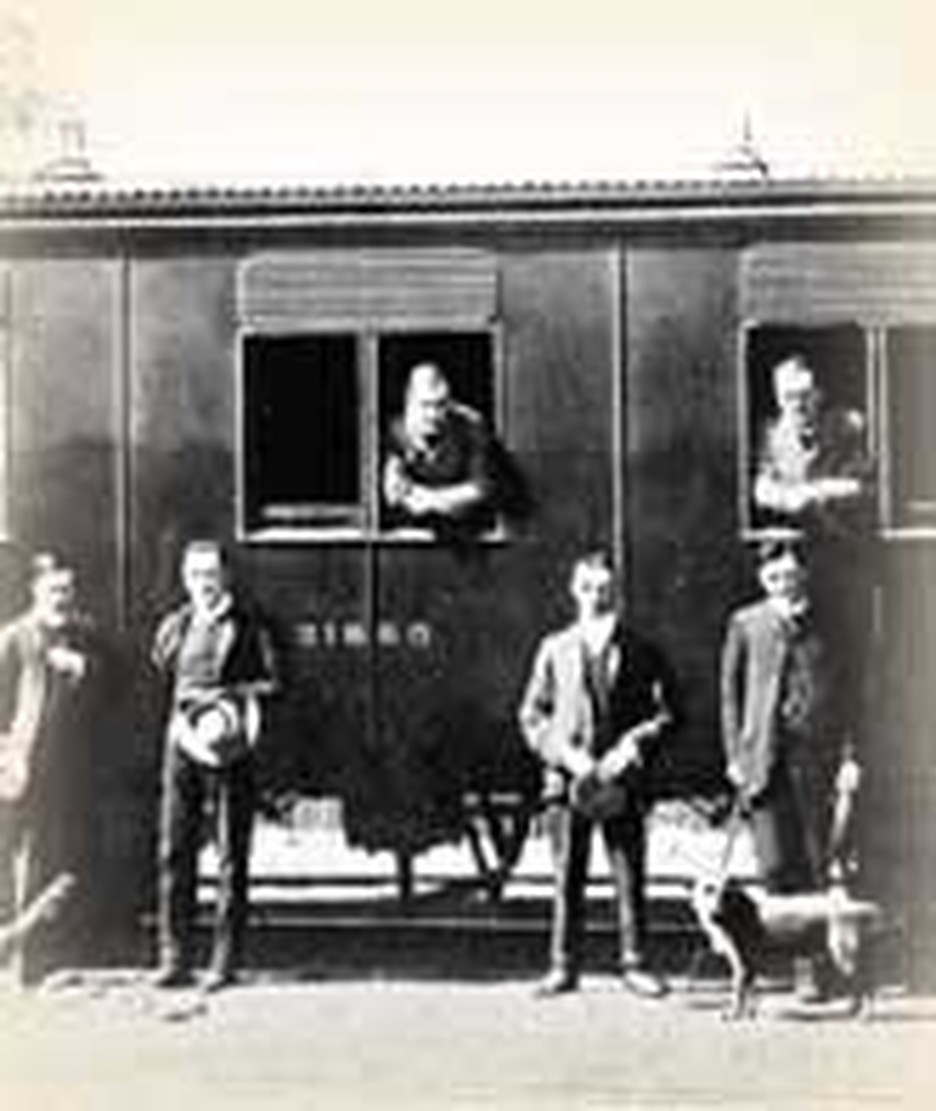
In western movies and books, good sheriffs march into town and clean up with their six shooters. In real life, other forces were also at work.
Some Wild West towns grew up overnight. Others fell empty almost as quickly when mines ran out, or disaster struck and camps moved on. Usually the population was rough and ignorant of Christ.
Under those conditions, it didn't make much sense to go to the expense of putting up a church. The town it was built for might disappear before the building was finished. Bishop Walker, an Episcopalian, had a thought. Why not outfit railroad cars as a chapels? These could be pulled to where they were needed and would cost just two or three thousand dollars to buy.
Whether Walker knew it or not, chapel cars were already in use in England on remote sidings. But he was good at selling his idea. Cornelius Vanderbilt, One of America's richest men, gave the first donation to the new ministry and Walker's first chapel car was delivered in 1890.
"The Cathedral Car," as it was called, traveled over seventy thousand miles during its ten years of service. Many of the men who visited it came merely out of curiosity, but untold numbers of others accepted the Christian way of life or were strengthened in their Christian walk through it.
On this day, May 23, 1891, the first of several Baptist rail cars was dedicated in Cincinnati Ohio. The "Evangel" seated one hundred worshippers. Ten feet wide and sixty feet long, it was the brain child of Reverend Boston W. Smith. He had help from Northern Pacific Railroad. Its General Manager ordered his people to hook the car to any of the company's engines at no charge. Prodded by a preacher brother, this railroad manager had also organized the syndicate that raised the funds to build "Uncle" Boston's cars. The syndicate's most prominent member was business tycoon, John D. Rockefeller. Baptist cars took names such as "Glad Tidings," "Grace," and "Herald of Hope."
Thomas Edison, an unlikely friend of the church who considered himself an agnostic, provided the rail chapels with his new invention the phonograph. Cowboys starved for music came to hear recordings. It was another practical drawing card.
Not everyone appreciated the idea of chapel cars. In Oregon, one car was pelted with eggs, marked with graffiti and set afire. It survived, protected by nobler individuals in the local population.
The Roman Catholic church built three cars. Altogether at least eleven of the iron-wheeled chapels went West. The idea was borrowed by other countries, too. The Orthodox used them in Russia, Presbyterians in South Africa and missionaries in China. It is a safe bet that America's chapel cars did more to tame the west than all the gunmen heroized in Hollywood films.
Bibliography:
- Baynes, A. Hamilton. South Africa [Handbook of English Church Expansion] London: Mowbray, 1908. Source of image.
- "Chapel Cars of America." http://www.chapelcars.com/
- McKernan, Mary. "How the West Was Really Won." Christian History Magazine. Christianity Today, 1996.
- Various internet articles including the book review of Taylor, Wilma Rugh and Taylor, Norman Thomas. This Train Is Bound for Glory. Valley Forge: Judson Press, 1999.

.png)
